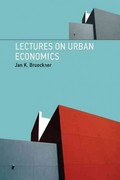Question
As a way of experiencing the Humanities beyond your classroom, computer, and textbook, you are asked to certain type of cultural activity that fits well
As a way of experiencing the Humanities beyond your classroom, computer, and textbook, you are asked to certain type of "cultural activity" that fits well with our course and then report on your experience.Your instructor will require you to propose an activity and get instructor approval before you do it and report on it (students should look for any instructions in that respect). Every effort should be made to ensure that this is a hands-on experience (not a virtual one), that this activity fits the HUM 112 class well, and that the activity is of sufficient quality for this university course. The two (2) key types of activities are a museum visit or a performance.Note: This must not be a report on the same activity (and certainly not the same report) as done for another class, like HUM 111. For instance, one might go to the same museum as done for HUM 111, but this HUM 112 report will focus on entirely different works and displays.
- Visit a museum or gallery exhibition or attend a theater, dance, or musical performance before the end of Week 9. The activity (museum or performance) should have content that fits our course well. Have fun doing this.
- two to three (2-3) page report that describes your experience.
- Clearly identify the event location, date attended, the attendees, and your initial reaction upon arriving at the event.
- Provide specific information and a description of at least two (2) pieces.
- Provide a summary of the event and describe your overall reaction after attending the event.
- Use at least the class text as a reference (additional sources are fine, not necessary unless required by your content). Your report should include connections you make between things observed in your activity and things learned in the course and text.
Note: Submit your cultural activity choice to the instructor for approval before the end of Week 5 (earlier is even better). Look for guidance from the instructor for how or where to make your proposal. You may also seek advice from your instructor (provide your town / state or zip code) for a good activity in your general area.
Visiting a Museum
- It makes sense to approach a museum the way a seasoned traveler approaches visiting a city for the first time. Find out what is available to see. In the museum, find out what sort of exhibitions are currently housed in the museum and start with the exhibits that interest you.
- If there is a travelling exhibition, it's always a good idea to see it while you have the chance. Then, if you have time, you can look at other things in the museum.
- Every effort should be made ahead of time to identify a museum that has items and works one can easily connect to our HUM 112 class and book. Since HUM 112 covers from 1600 AD to the present, it makes more sense to focus on items from this time frame. In general, museums with fine arts work better than history museums.
- Any questions about whether a museum-visit activity fits the course and assignment well enough will be decided by the instructor when the student seeks approval for the activity. Any alternative activity outside the normal ones listed here, such as for those limited by disability or distance, will be determined by the instructor. Normally, we do not expect students to travel over an hour to get to an approved activity.
- Make notes as you go through the museum and accept any handouts or pamphlets that the museum staff gives you. While you should not quote anything from the printed material when you submit report, the handouts may help to refresh your memory later.
- The quality of your experience is not measured by the amount of time you spend in the galleries or the number of works of art that you actually see. The most rewarding experiences can come from finding two or three (2 or 3) pieces of art or exhibits which intrigue you and then considering those works in leisurely contemplation. Most museums have benches where you can sit and study a particular piece.
- If you are having a difficult time deciding which pieces to , ask yourself these questions: (1) If the museum you are visiting suddenly caught fire, which two (2) pieces of art or exhibits would you most want to see saved from the fire? (2) Why would you choose those two (2) particular pieces?
Step by Step Solution
There are 3 Steps involved in it
Step: 1

Get Instant Access to Expert-Tailored Solutions
See step-by-step solutions with expert insights and AI powered tools for academic success
Step: 2

Step: 3

Ace Your Homework with AI
Get the answers you need in no time with our AI-driven, step-by-step assistance
Get Started


